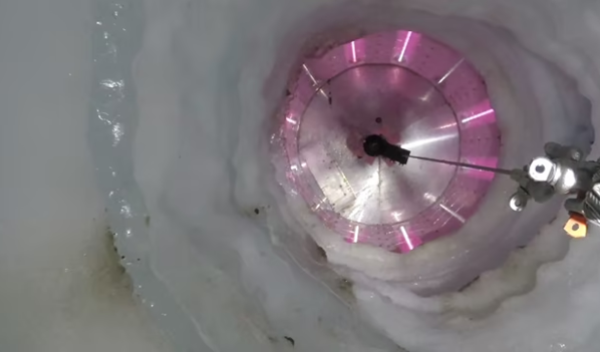Since the discovery 50 years ago of subglacial lakes in Antarctica — some of the least accessible geological features on Earth — scientists have attempted to extract lake bed sediment to learn about the formation, movement and past conditions of the ice sheet. Now, a team of researchers with the U.S. National Science Foundation-funded project Subglacial Antarctic Lakes Scientific Access, or SALSA, has successfully recovered the first layered sediments from beneath the modern Antarctic ice sheet.
Their findings from analysis of the sediment sample, published in the journal Geology, offer important insights into the dynamics of the Antarctic ice sheet and its history, including a time when the ice sheet was smaller than its current size. The work adds to the sedimentary record of knowledge of Antarctica and has implications for understanding how Antarctica may contribute to global sea level rise.
“The information from this unique sample of subglacial lake sediments shows us the value of being able to access these extremely remote settings,” said Paul Cutler, a program director in NSF’s Office of Polar Programs. “It is an impressive scientific, technical and logistical feat that has been several years in the making.”
Previous studies of modern subglacial lakes were limited to the timescale of the modern ice sheet due to the challenge of sampling an environment locked beneath thousands of feet of ice. The sediment sample extracted by the SALSA team will allow researchers to better understand subglacial activity across almost two centuries, instead of merely two decades.
“There are places on Earth that we still haven’t explored,” said Matthew Siegfried, a geophysicist at the Colorado School of Mines and a lead author of the paper. “We have now one sample trying to understand an environment that is one and a half times the size of the continental United States. It’s like pulling up a rock in New Orleans and understanding how the Mississippi River and its entire basin has acted for the past 1,000 years.”
The saga of the SALSA team’s quest to explore subglacial lakes is chronicled in “The Lake at the Bottom of the World,” a feature-length documentary film released across multiple streaming platforms on February 28, 2023, by the team in partnership with Metamorph Films. The NSF-funded film gives viewers a close look at how the scientists conducted their work amid harsh Antarctic conditions.
“Knowing the dynamics of the ice sheet in the past is critical for predicting how it may respond to changes in the future,” said Brent Christner, a microbiologist at the University of Florida and SALSA team member. “This information has also helped us better understand the connectedness of these ecosystems to processes on the surface and regions beneath deep Antarctic ice that have yet to be explored.”
Source: News Release

